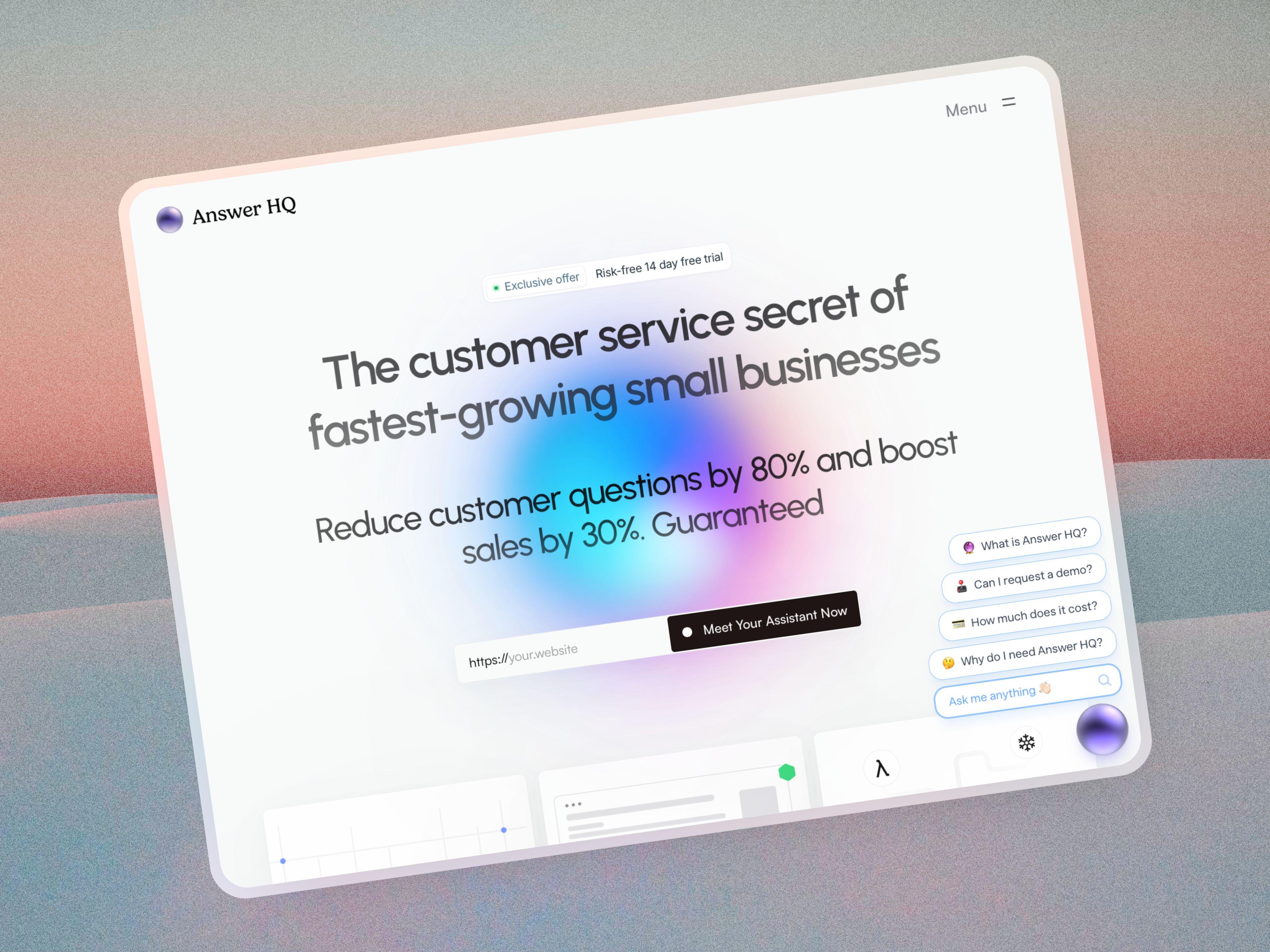Complete Guide to Automating Customer Service for Small Business (2025)
Jacky Liang
Dec 28, 2024
Every morning, small business owners across the world wake up to dozens of customer questions in their inbox. The same questions, over and over: shipping times, return policies, product specifications. As a founder who's built multiple companies, I know this routine all too well. It's time we break free from this cycle.
This comprehensive guide will show you exactly how to automate your customer service effectively, allowing you to focus on growing your business instead of drowning in support tickets.
Understanding the True Cost of Manual Customer Service
Before diving into automation, let's understand what manual customer service really costs your business. Beyond the obvious time spent responding to emails, there are hidden costs that eat away at your growth potential:
Time fragmentation is perhaps the biggest hidden cost. When you're constantly switching between strategic tasks and customer support, you lose approximately 23 minutes of productive time with each context switch. For a typical small business owner handling 20 customer queries per day, that adds up to nearly 8 hours of lost productive time – a full workday spent just getting back into focus.
Then there's the opportunity cost. Every hour spent on repetitive support tasks is an hour not spent on:
Product development
Marketing initiatives
Strategic partnerships
Team building
Business growth
The Evolution of Customer Service Automation
Customer service automation has come a long way from the frustrating chatbots of the past. Modern AI solutions can now:
Understand context and nuance in customer questions
Provide accurate, detailed responses
Learn from your existing business content
Improve automatically over time
Handle complex, multi-step inquiries
This evolution means small businesses can now access enterprise-level support capabilities without enterprise-level complexity or cost.
Step-by-Step Implementation Guide
Phase 1: Preparation and Analysis
Start by analyzing your current customer service workflow:
Document your most common customer questions and their answers. Look through your:
Email inbox
Support tickets
Live chat logs
Phone call notes
Social media messages
This audit will help you understand what to automate first and identify any gaps in your current documentation.
Phase 2: Choose Your Automation Tools
When selecting customer service automation tools, consider these key factors:
Implementation Complexity
How long does setup take?
What technical skills are required?
Will you need ongoing maintenance?
Learning Capability
Does the system learn from your existing content?
Can it improve from customer interactions?
How easily can you update its knowledge?
Integration Requirements
Does it work with your current systems?
What about future tools you might adopt?
How flexible is the integration?
Cost Structure
What's the total cost of ownership?
Are there hidden fees?
How does pricing scale with growth?
Phase 3: Content Preparation
For successful automation, organize your business information effectively:
Create clear documentation for:
Product details and specifications
Shipping and return policies
Frequently asked questions
Troubleshooting guides
Common procedures
Remember: Your automation system is only as good as the information you feed it.
Best Practices for Customer Service Automation
1. Start Small and Scale Up
Begin by automating your most common and straightforward inquiries. This might include:
Order status checks
Return policy questions
Product availability inquiries
Shipping information requests
As you gain confidence in the system, gradually expand to more complex scenarios.
2. Maintain the Human Touch
Automation should enhance, not replace, the human element of your customer service. Ensure your automated responses:
Sound natural and conversational
Reflect your brand's voice
Know when to escalate to human support
Provide clear paths to human assistance when needed
3. Monitor and Optimize
Regularly review your automation performance:
Track resolution rates
Monitor customer satisfaction
Identify knowledge gaps
Update content based on new questions
Analyze customer feedback
Measuring Success
Effective automation should show measurable improvements in:
Response times (aim for instant responses vs. hours)
Support ticket volume (expect 80% reduction)
Customer satisfaction scores
Team productivity
Sales conversion rates (typically 30% increase)
Real-World Success Stories
"After implementing AI customer service automation, our support tickets dropped by 80%. Our team finally has time to focus on growth initiatives instead of answering the same questions repeatedly." - Sarah K., Software Company Founder
"The ROI was immediate. Not only did we save countless hours, but our sales actually increased because customers got immediate answers to their pre-purchase questions." - Mark R., E-commerce Store Owner
The Future of Small Business Customer Service
As AI technology continues to advance, we're seeing new possibilities emerge:
Predictive support anticipating customer needs
Multilingual capabilities without translation costs
Integration with AR/VR for visual support
Emotional intelligence in automated responses
Getting Started with Automation
Ready to transform your customer service? Here's your action plan:
Audit your current support workflow
Document your most common questions
Choose an automation solution that fits your needs
Prepare your knowledge base
Start with basic automation
Monitor and optimize
Remember, the goal isn't to eliminate human interaction, but to free up your time for meaningful customer engagement and business growth.
Start Your Customer Service Automation Journey
Transform your customer service from a time sink into a growth driver.





